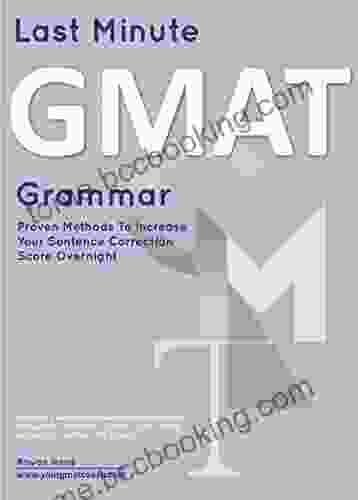Build Robust and Maintainable Software with Object-Oriented Design Patterns

By [Author's Name] | [Publication Date]
4.5 out of 5
| Language | : | English |
| File size | : | 4113 KB |
| Text-to-Speech | : | Enabled |
| Screen Reader | : | Supported |
| Enhanced typesetting | : | Enabled |
| Print length | : | 511 pages |
In the ever-evolving world of software development, where complexity and scale are constantly increasing, the need for robust and maintainable software solutions has become paramount. Object-oriented design patterns emerge as a powerful tool to address these challenges, providing a proven set of best practices and reusable design solutions.
This comprehensive guide unlocks the secrets of object-oriented design patterns, empowering you to design, implement, and maintain software that is not only functional but also flexible, extensible, and easy to evolve.
Benefits of Object-Oriented Design Patterns
- Improved code reusability: Patterns provide pre-designed solutions to common problems, reducing the need for repetitive coding and enhancing productivity.
- Increased code flexibility: Patterns promote loose coupling between classes and components, making it easier to modify or extend functionality without affecting other parts of the system.
- Enhanced code maintainability: Patterns help organize code into well-defined structures, making it easier to understand, maintain, and debug.
- Improved software quality: Patterns are battle-tested solutions that have been proven to produce reliable and robust software architectures.
- Facilitated communication: Patterns provide a common language for developers to discuss and collaborate on software design, fostering better understanding and teamwork.
Types of Object-Oriented Design Patterns
Design patterns are categorized into three main groups based on their purpose:
Creational Patterns
Creational patterns focus on object creation mechanisms, providing flexible and reusable ways to instantiate objects.
- Factory Method: Creates objects without specifying their exact class.
- Abstract Factory: Provides an interface for creating families of related objects.
- Singleton: Ensures that only one instance of a class exists.
- Builder: Separates the construction of a complex object from its representation.
Structural Patterns
Structural patterns focus on organizing classes and objects into larger structures, improving flexibility and maintainability.
- Adapter: Allows objects with incompatible interfaces to work together.
- Bridge: Decouples an abstraction from its implementation, enabling independent variation.
- Composite: Composes objects into tree structures to represent part-whole hierarchies.
- Decorator: Attaches additional responsibilities to objects dynamically without affecting their core functionality.
- Facade: Provides a simplified interface to a complex system.
- Flyweight: Reduces memory usage by sharing common objects instead of creating new ones.
- Proxy: Provides a surrogate or placeholder for another object.
Behavioral Patterns
Behavioral patterns focus on communication and collaboration between objects, defining common ways to handle interactions.
- Chain of Responsibility: Allows a set of objects to handle requests sequentially.
- Command: Encapsulates a request as an object, enabling parameterization of clients.
- Interpreter: Defines a grammar for interpreting a language and provides an interpreter to execute the grammar.
- Iterator: Provides a way to access the elements of an aggregate object sequentially without exposing its underlying representation.
- Mediator: Defines an object that encapsulates how a set of objects interact.
- Observer: Defines a one-to-many dependency between objects, where one object notifies others about changes to its state.
- State: Allows an object to alter its behavior when its internal state changes.
- Strategy: Defines a family of algorithms, encapsulates each one, and makes them interchangeable.
- Template Method: Defines the skeleton of an algorithm in a method, deferring some steps to subclasses.
- Visitor: Separates an algorithm from an object structure, enabling the algorithm to operate on different structures without modifying them.
Best Practices for Using Design Patterns
- Understand the problem thoroughly: Identify the specific problem you are trying to solve before applying a design pattern.
- Choose the right pattern: Select the most appropriate pattern that aligns with the problem and requirements.
- Apply the pattern correctly: Follow the intent and guidelines of the pattern to ensure its proper implementation.
- Avoid over-engineering: Use patterns judiciously and only when necessary to avoid unnecessary complexity.
- Document your design: Clearly document the reasons for using a specific pattern and how it solves the problem.
Example of Applying Design Patterns
Consider an e-commerce application where you need to provide a flexible and extensible way to apply discounts to products. You can use the Chain of Responsibility pattern to define a series of discount handlers that can be chained together to process discounts sequentially. This approach allows you to easily add or remove discounts without modifying the core application logic.
Mastering object-oriented design patterns is essential for building robust, maintainable, and scalable software solutions. This comprehensive guide has provided you with a deep understanding of design patterns, their benefits, and best practices for using them. By leveraging these powerful tools, you can elevate your software development skills and create high-quality software that stands the test of time.
Unlock the full potential of object-oriented design patterns today and transform your software development journey.
**SEO-Optimized Alt Attributes for Images:**
* **Image 1:** A developer working at a computer, surrounded by code and design diagrams, representing the process of creating robust software with design patterns. * **Image 2:** A diagram illustrating the different categories of design patterns: creational, structural, and behavioral, with their respective patterns listed below. * **Image 3:** A series of code snippets demonstrating the implementation of different design patterns, showcasing their real-world application. * **Image 4:** A graph showing the benefits of using design patterns, highlighting their impact on code reusability, flexibility, maintainability, quality, and communication.
4.5 out of 5
| Language | : | English |
| File size | : | 4113 KB |
| Text-to-Speech | : | Enabled |
| Screen Reader | : | Supported |
| Enhanced typesetting | : | Enabled |
| Print length | : | 511 pages |
Do you want to contribute by writing guest posts on this blog?
Please contact us and send us a resume of previous articles that you have written.
 Book
Book Novel
Novel Page
Page Chapter
Chapter Text
Text Story
Story Genre
Genre Reader
Reader Library
Library Paperback
Paperback E-book
E-book Magazine
Magazine Newspaper
Newspaper Paragraph
Paragraph Sentence
Sentence Bookmark
Bookmark Shelf
Shelf Glossary
Glossary Bibliography
Bibliography Foreword
Foreword Preface
Preface Synopsis
Synopsis Annotation
Annotation Footnote
Footnote Manuscript
Manuscript Scroll
Scroll Codex
Codex Tome
Tome Bestseller
Bestseller Classics
Classics Library card
Library card Narrative
Narrative Biography
Biography Autobiography
Autobiography Memoir
Memoir Reference
Reference Encyclopedia
Encyclopedia Elise Christie
Elise Christie Elaine Raphael
Elaine Raphael Eileen Kennedy Moore
Eileen Kennedy Moore Eleanor Herman
Eleanor Herman Eiki Eiki
Eiki Eiki Justine Bold
Justine Bold Tarana Burke
Tarana Burke E C Murray
E C Murray Elaine Viets
Elaine Viets Nicolai J Foss
Nicolai J Foss Elana M Johnson
Elana M Johnson Elizabeth L Eisenstein
Elizabeth L Eisenstein Ed Brodow
Ed Brodow Elizabeth Emma Ferry
Elizabeth Emma Ferry Eadweard Muybridge
Eadweard Muybridge Ed Vere
Ed Vere Eileen Alexander
Eileen Alexander Elizabeth David
Elizabeth David E B Tucker
E B Tucker Eduardo Navas
Eduardo Navas
Light bulbAdvertise smarter! Our strategic ad space ensures maximum exposure. Reserve your spot today!

 Eugene ScottUnveiling the Enchanting World of Greek Mythology: A Journey Through the Most...
Eugene ScottUnveiling the Enchanting World of Greek Mythology: A Journey Through the Most...
 Branson CarterEmbark on a Hilarious Adventure with "Stinky Kittens Little Cats: Eww and...
Branson CarterEmbark on a Hilarious Adventure with "Stinky Kittens Little Cats: Eww and... Dalton FosterFollow ·5.5k
Dalton FosterFollow ·5.5k Drew BellFollow ·19.3k
Drew BellFollow ·19.3k Dean ButlerFollow ·13.8k
Dean ButlerFollow ·13.8k Ruben CoxFollow ·17.7k
Ruben CoxFollow ·17.7k Al FosterFollow ·8.9k
Al FosterFollow ·8.9k Maurice ParkerFollow ·19.5k
Maurice ParkerFollow ·19.5k Rod WardFollow ·14.6k
Rod WardFollow ·14.6k John Dos PassosFollow ·11.1k
John Dos PassosFollow ·11.1k

 Clarence Brooks
Clarence BrooksUncover the Secrets in the Dead of Night: Dive into Lee...
Step into the heart-stopping world of Jack...

 Clay Powell
Clay PowellAce the GMAT Grammar Section: Your Last-Minute...
The GMAT is a challenging...

 Salman Rushdie
Salman RushdieEmbark on a Heartwarming Journey with "The All Together...
: Immerse yourself in the charming world of...

 Dawson Reed
Dawson ReedSpring Magic: Stunningly Illustrated Fun for Kids to...
Welcome to the Enchanting World of...

 Bradley Dixon
Bradley DixonGone Tomorrow: A Gripping Thriller by Lee Child that Will...
In the literary realm of thrillers, few...
4.5 out of 5
| Language | : | English |
| File size | : | 4113 KB |
| Text-to-Speech | : | Enabled |
| Screen Reader | : | Supported |
| Enhanced typesetting | : | Enabled |
| Print length | : | 511 pages |










